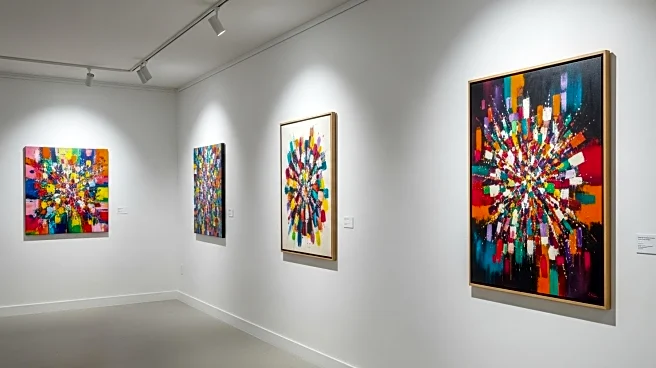What's Happening?
Amid a shrinking art market, galleries are increasingly turning to merchandise as a strategy to maintain public interest and engagement. The Art Basel and UBS Art Market Report noted a 12% decline in market value
last year, prompting galleries to explore alternative revenue streams. One example is the Lyndsey Ingram gallery's summer show featuring Lucy Sparrow's hand-stitched felt fish and chip shop, which attracted significant media attention and visitor numbers. Despite the popularity of such events, they do not match the financial returns of traditional art sales, highlighting the challenges galleries face in balancing artistic integrity with financial sustainability.
Why It's Important?
The shift towards merchandise reflects broader trends in the art market, where galleries are seeking innovative ways to engage audiences and sustain operations. This approach may help keep art in the public consciousness during economically challenging times, offering a more accessible entry point for potential buyers. However, the reliance on merchandise underscores the financial pressures facing galleries, as they navigate declining market values and changing consumer preferences. The strategy also raises questions about the future direction of the art market and the role of galleries in promoting artistic value versus commercial viability.
What's Next?
As galleries continue to experiment with merchandise, they may explore new collaborations and partnerships to enhance their offerings and reach wider audiences. This trend could lead to a diversification of gallery activities, blending traditional art exhibitions with more commercially oriented ventures. The art market may also see increased competition among galleries to attract visitors and buyers through unique and engaging experiences, potentially reshaping the landscape of art consumption.
Beyond the Headlines
The move towards merchandise highlights cultural shifts in how art is perceived and consumed, with implications for the relationship between artists, galleries, and audiences. As galleries balance financial needs with artistic integrity, there may be ethical considerations regarding the commercialization of art and its impact on artistic expression. This development also reflects broader societal trends towards experiential and accessible cultural experiences, influencing how art is valued and appreciated.











